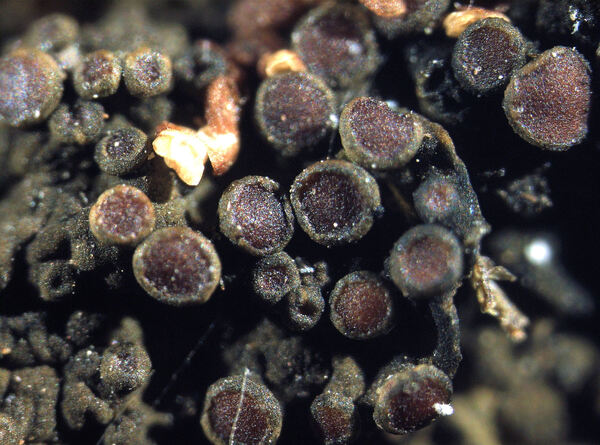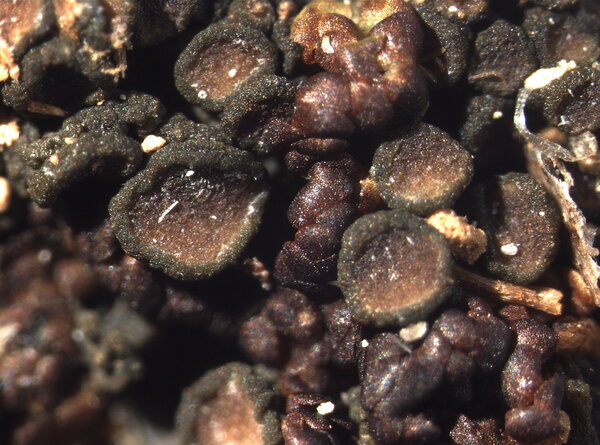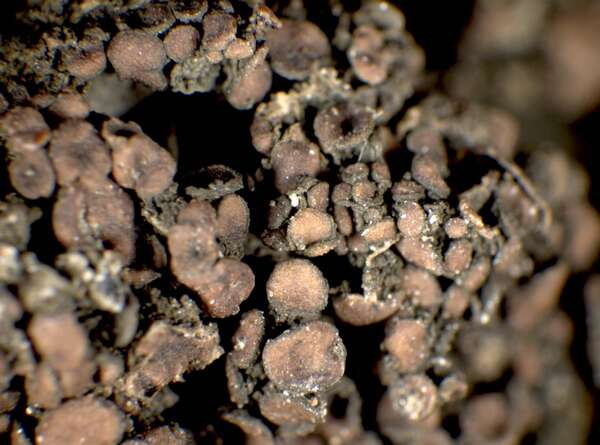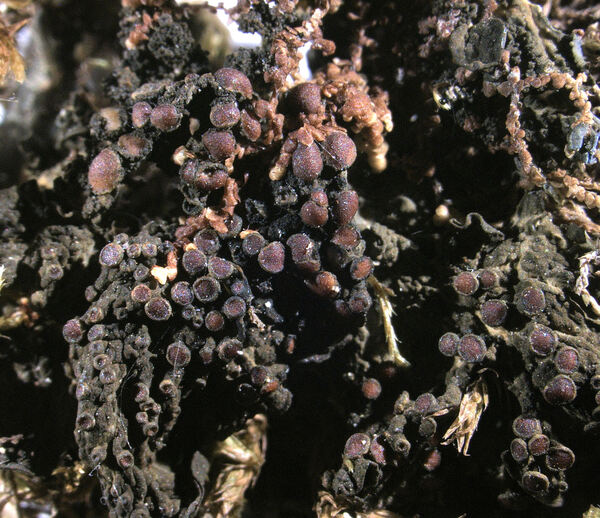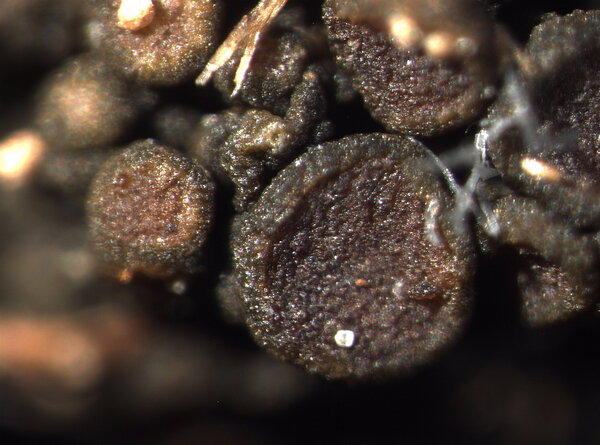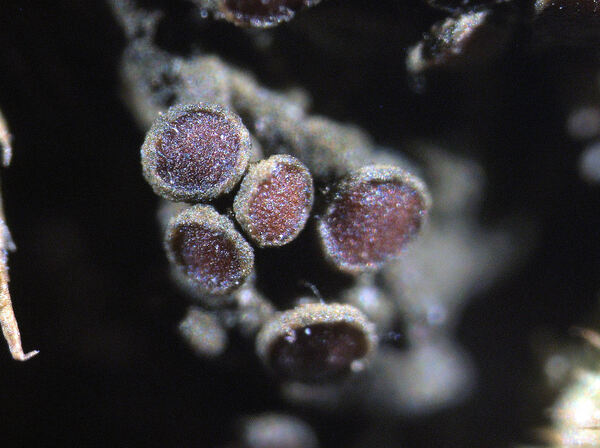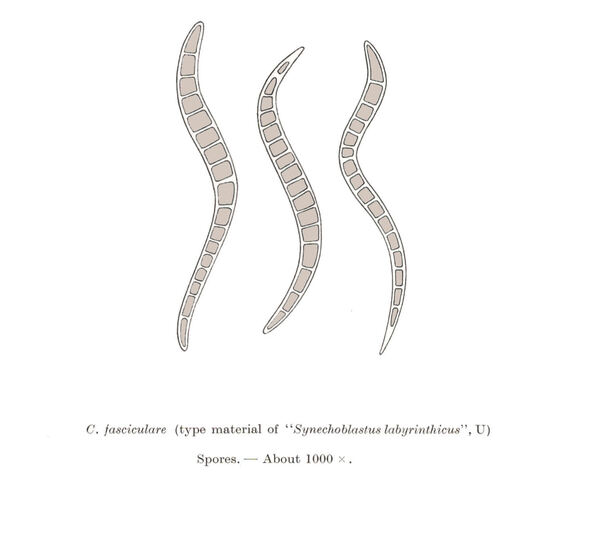Gabura fascicularis (L.) P.M. Jørg.
Lichenologist, 46: 594, 2014. Basionym: Lichen fascicularis L. - Mantissa Pl., 1: 133, 1767.
Synonyms: Arctomia fascicularis (L.) Otálora & Wedin; Collema aggregatum sensu Sommerf.; Collema ascaridosporum (A. Massal.) Degel.; Collema dinaricum Zahlbr.; Collema fasciculare (L.) F.H. Wigg.; Lathagrium aggregatum (“Ach.”) M. Choisy; Lathagrium ascaridosporum A. Massal.; Parmelia nigrescens var. fascicularis (L.) Schaer.; Synechoblastus aggregatus (“Ach.”) Th. Fr.; Synechoblastus ascaridosporus (A. Massal.) Zwackh; Synechoblastus fascicularis (L.) A.L. Sm.; Synechoblastus labyrinthicus Anzi
Distribution: N - Ven (Lazzarin 2000b, Nascimbene 2008c), TAA (Nascimbene & al. 2007b), Lomb, Piem (Isocrono & al. 2004, Matteucci & al. 2008b), Emil, Lig. C - Tosc, Marc (Nimis & Tretiach 1999), Umb (Ravera 1998, Ravera & al. 2006), Laz (Ravera 2002b), Abr, Sar (Zedda 2002). S - Camp (Garofalo & al. 2010), Pugl, Bas (Potenza 2006, Potenza & Fascetti 2012, Ravera & al. 2021c), Cal (Puntillo 1996), Si.
Description: Thallus subfoliose to subcrustose, homoiomerous, ecorticate, gelatinous and markedly swollen when wet, coarsely wrinkled and indistinctly lobed, dark olive-green to brown-black when dry, forming rounded, up to 2-3 cm wide and to 1 cm thick (when moist) pillows. Lobes not always developed, short, flattened, adpressed, sometimes with erect lobules developing from wrinkles. Apothecia common, lecanorine, numerous and crowded, 0.8-1.5(-2) mm across, sessile to rarely substipitate, with a flat, brown disc, and a thick to thin, more or less wrinkled thalline margin. Thalline exciple ecorticate; proper exciple thin, euthyplectenchymatous, of thin-walled, slightly pigmented hyphae; epithecium brownish; hymenium colourless, 85-130 µm high, I+ blue; paraphyses lax, thin and flexuose, branched, 1-1.5 µm thick at mid-level, distinctly brown-pigmented at the slightly swollen apices. Asci (6-)8-spored, clavate, with an I+ reddish to blue wall, the tholus lacking amyloid structures. Ascospores 9-16-septate, hyaline, worm-like and spirally arranged in ascus, often attenuated towards one or both ends, (50-)70-120(-170) x 4.5-5(-6) µm. Photobiont: cyanobacterial (Nostoc, the cells in long chains). Spot tests: all negative. Chemistry: without lichen substances. Note: a mild-temperate lichen with a fragmented holarctic range, found on old broad-leaved trees, often on mosses in open, humid stands, somehow more frequent in the past, presently very much declining. With the probable exception of Liguria, it may be presently almost extinct in Northern Italy, and could be restricted to a few humid sites of Tyrrhenian Italy. The recent record from Tuscany by Pasquinelli & Puccini (2010), judging from pictures and description, is wrong. It is included in the Italian red list of epiphytic lichens as “Near-threatened” (Nascimbene & al. 2013c).
Growth form: Foliose, broad lobed
Substrata: bark
Photobiont: cyanobacteria, filamentous (e.g. Nostoc, Scytonema)
Reproductive strategy: mainly sexual
Most common in areas with a humid-warm climate (e.g. most of Tyrrenian Italy)
Commonnes-rarity: (info)
Alpine belt: absent
Subalpine belt: absent
Oromediterranean belt: absent
Montane belt: extremely rare
Submediterranean belt: extremely rare
Padanian area: absent
Humid submediterranean belt: extremely rare
Humid mediterranean belt: very rare
Dry mediterranean belt: absent
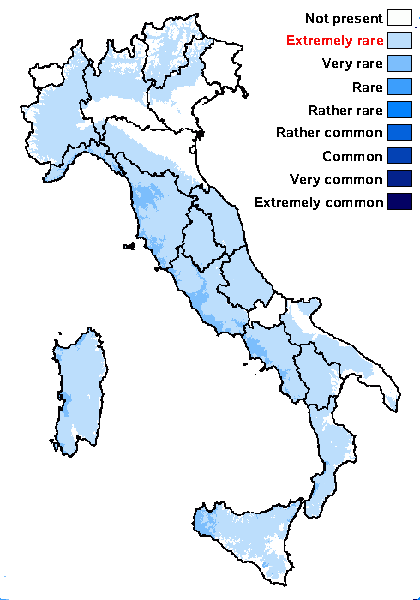
Predictive model
Herbarium samples
Growth form: Foliose, broad lobed
Substrata: bark
Photobiont: cyanobacteria, filamentous (e.g. Nostoc, Scytonema)
Reproductive strategy: mainly sexual
Most common in areas with a humid-warm climate (e.g. most of Tyrrenian Italy)
Commonnes-rarity: (info)
Alpine belt: absent
Subalpine belt: absent
Oromediterranean belt: absent
Montane belt: extremely rare
Submediterranean belt: extremely rare
Padanian area: absent
Humid submediterranean belt: extremely rare
Humid mediterranean belt: very rare
Dry mediterranean belt: absent

Predictive model
| Herbarium samples |
 INDEX FUNGORUM
INDEX FUNGORUM
 GBIF
GBIF
 DOLICHENS
DOLICHENS
